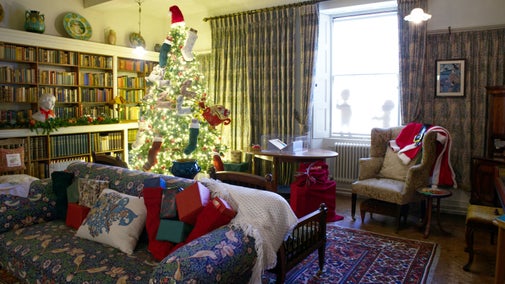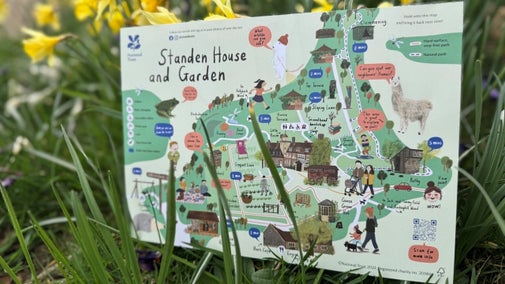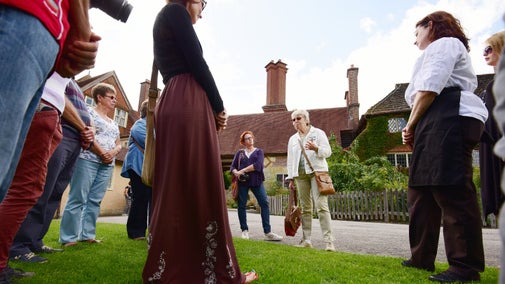
Become a member
Join today and help protect nature, beauty and history – for everyone, for ever. Enjoy access to more than 500 places with National Trust membership.
Arts and Crafts family home with Morris & Co. interiors, set in a beautiful hillside garden
West Hoathly Road, East Grinstead, West Sussex, RH19 4NE

Experience the magic of Christmas as the house is transformed into a festive retreat. See how the Beale family celebrated Christmas and enjoy beautifully decorated rooms. Join in with our family 'Jolly Holly' trail, with fun and games for all with a prize at the end. During 'Twilight Lates' weekends in December, see the house atmospherically lit for Christmas and join us for carols around the Christmas tree. Explore the Beale family’s Christmas story as each room in the house reflects a different family member’s idea of the perfect gift or festive experience. At the centre of it all, the grand staircase will be transformed into a snowy scene—bringing the family’s dream of a white Christmas to life. Last entry to the house is at 3pm. Standen is closed on Christmas Eve and Christmas Day.

Find family-friendly things to do at Standen, from activity based trails in the school holidays and walking woodland paths to building a den and running off steam in Adventure Corner. Download a copy of our family map to plan ahead with your family visit.

Stay up to date with all our events here at Standen and plan your visit before you arrive. From children's trails in the school holidays and music on a Sunday afternoon, to Arts and Crafts exhibitions and demonstrations, find out more about our year round seasonal events.

Bring your dog for a walk at Standen and explore acres of woodland paths. Dogs are also welcome in the formal garden so you can explore more with your four-legged friend. Standen House and Garden is a two pawprint rated place.

Sometimes it's the little things that make the best family memories, like having a swing, playing in the grass or spotting bugs on a family walk. Our new family maps are free to pick up and show how to best enjoy your family visit.

Plan your visit to this Arts and Crafts house and garden.

Standen is a great place to visit with a group. For a day to remember, book a Standen history tour with one of our friendly guides, then stop off for lunch or refreshments in the barn cafe. Visit the Arts and Crafts house, walk around the hillside garden or explore further afield in the woodland. Browse the range of William Morris products in the shop and find a gift for a special someone, or even just treat yourself. Group discounts are available. To chat through your group visit please email standengroups@nationaltrust.org.uk or call 01342 323029.


Join today and help protect nature, beauty and history – for everyone, for ever. Enjoy access to more than 500 places with National Trust membership.